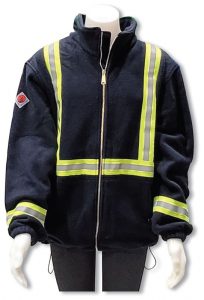
In a closed-loop process, General Recycled collects and shreds flame-resistant workwear into recycled fiber for new FR garments that are just as effective as virgin fiber products.
By Rachael S. Davis, Executive Editor
Flame-resistant (FR) workwear performs an extremely important function keeping workers in high-risk jobs in industries where there is a danger of exposure to fire hazards, electrical arcs or combustible dust — such as oil and gas workers, electricians, welders, airline and commercial laundry employees, and fire-fighters, among other occupations — safe while at work. Sadly, these all-important garments become a nuisance at the end of their useful life.
They cannot be incinerated because of the benzene found in the polymer’s chemical structure as well as possible hazardous chemical finishes, and instead, must be sent to a landfill. Estimates vary on how much aramid fiber is produced each year and it’s difficult to quantify how many garments are discarded annually. Some estimates suggest annual demand for para- and meta-aramid fibers exceeds 100,000 tons. But there is no question it is a global issue adding hazardous waste to landfills. Additionally, garments produced using meta- and para-aramid fabrics are 100-percent non-biodegradable. And even if the garments eventually begin to break down, any residual chemicals released into the landfill are toxic. In some cases, landfills are refusing to take such waste because of this persistence and the associated environmental issues. The clear answer is to keep them out of landfills in the first place, but where can the garments go and what can we do with the material?
These are questions asked more than 10 years ago by Ted Parker, Dave Kasper and Larry Suzuki — three men with more than 100 combined years of experience in the textile industry. “There was a conversation among colleagues, and we realized that fiber from used meta and para-aramid garments would have some value at the end of their lifecycle if we could turn the garments back into fibers, yarns and fabrics,” Parker recalled. However, while the men had lots of textile industry experience, textile recycling was new to them and they had to learn a lot very quickly.
Their initial conversation led to the formation of General Recycled Ltd., a Canada-based FR garment recycling business established in 2012 where Parker is president, Suzuki is vice president of Finance, and Kasper is vice president of Sales & Product Development. The company is headquartered in Burnaby, British Columbia, operates an aramid shredding facility in Val-des-Sources, Quebec, and owns a warehouse in Leduc, Alberta. “Quebec is where the textile infrastructure in Canada is located, along with some of the value chain, and it made sense for us to build our facility there,” Parker said.
“Canada is a big oil and gas producer with the third largest global oil reserves, which means there are a lot of workers wearing aramid personal protective equipment for protection against flash fire hazards abundant within the industry,” Parker added.
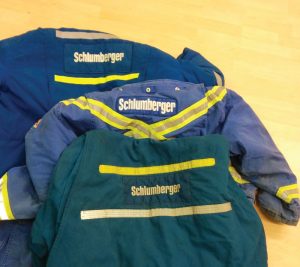
Tackling The Problem
The first step in recycling FR workwear is to gather the discarded garments. Clean FR garments are collected from end-users — a single source, companies and governments. To make this process as easy as possible, General Recycled works with the end-use companies to create a collection process that works for them and there is no one size fits all solution.
“Some customers control their own flow of garments on the back end where we will arrange for our transport to pick up, or they can ship their garments to us,” Kasper said. “Other customers use commercial laundries for their garment program, and it is easy for us to arrange collection at those pick-up points. We also help customers to identify costs associated with disposal that they currently are faced with to work those costs into the cost of the recycling program. Even with collection costs included, there are savings to be had by using recycled aramid fiber in yarns, fabrics and finished products. Everyone in the respective supply chains will know that 20 to 50 percent of the fiber input of recycled fabrics will be significantly cheaper than if they had used virgin fiber.”
When collecting garments, General Recycled is looking for fiber content — the type of garment isn’t of importance. “Because we are dealing with standards, all garments are typically labeled accordingly so it is easy to identify fiber content,” Kasper noted. All garments must be clean with no residual contamination and any oils collected during the dry-cleaning process can be recycled. Before the garments are shredded, any brass zippers or brass snaps are removed also to be recycled. In addition, any high-visibility FR reflective striping can be recycled too. “Each garment is decommissioned manually to remove the zippers and snaps, and if there is any doubt as to the fiber content, the garment is removed from the waste stream,” Parker said.
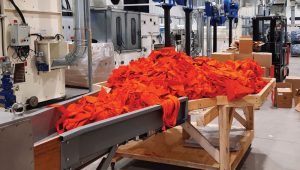
Tough To Shred
Aramid fibers are aromatic polyamides prized for their strength and abrasion resistance, as well as their low melting point and low flammability. But these positive attributes become a detriment at an FR garment’s end-of-life. “A regular pair of scissors won’t work to deconstruct the garments, and aramids eat machinery,” Parker stressed. “Unless the machinery is purposefully built to handle aramids, a conventional shredding line would go down very quickly costing tens of thousands of dollars to repair.”
Knowing this, General Recycled worked with machinery suppliers to develop a shredding line that features a carbon blade cutting system, reinforced tearing drums and twin carding and opening systems that can handle aramid fiber. The bonus to this type of machinery is that if it can handle aramids, it can shred any type of fiber, so General Recycled also can recycle any other type of textile garment. “Yes, our focus has been primarily on aramids, but we quickly understood that the proposed shredding plant we were building would be able to handle other fibers as well,” Parker noted.
The plant shreds a variety of fibers including Nomex IIA®, Kermel®, Kevlar®, Nomex®, Conex, Twaron, polybenzimidazole (PBI) fiber and Tecasafe® Plus. It also handles a limited amount of treated cotton and cotton/nylon blend fabrics, while conducting research and development on these recycled fibers and blends.
Next Steps
Once the garments are shredded into reuseable fiber, the fiber is blended. General Recycled can blend the fiber, or, most often, the spinners blend the fiber in their own operation.
Fiber is processed based on color. “So royal blue only gets combined with royal blue, navy with navy and orange with orange, for example,” Parker said. “We receive every shade imaginable from the same end-user because variables such as how many times has the garment been washed and has it experienced ultraviolet degradation, among others, impact the color.”
The recycled fiber is shorter than a virgin aramid fiber — as is typical for any shredded, recycled fiber — so in order to ensure the fiber is suitable for spinning, it is blended with some quantity of virgin fiber based on a patented formula developed by General Recycled. The resulting fiber blends contain between 20 and 50 percent post-consumer recycled aramid fiber depending on the desired yarn count. “Generally speaking, the coarser the yarn count, the more recycled content can be used in the blend,” Kasper explained. “When blending for a coverall or shirt and pant application, there may be between 20 and 30 percent recycled fiber in the blend. But in the case of a very heavy fleece or cut sleeve application, the recycled content may be as high as 50 percent.
“Think of it as baking a cake,” he continued. “We follow our recipe or create a new one for the end user. Our patents are on process and product with a wide margin to play with fiber input.” Depending on what specification the customer has and the standards they wish to achieve, the virgin aramid may be Nomex, Conex, Yantai or Arawin. The blends also may contain different modacrylics, antistatics or FR viscose fiber.
Ring spinning, open-end spinning and Vortex spinning have all been used to make yarn using the recycled fiber with successful results.
“We are shortening the staple fiber during recycling, and as a result, the fiber can never be as strong as a fiber made from a standard 50- to 51-millimeter-long virgin fiber,” Kasper said. “That being said, once blended with virgin fiber, the result is a product just about on par with virgin aramid in terms of strength with no loss of performance. Our recycled aramid products compare very favorably, meeting the same parameters as virgin aramid products on the market.”
According to Kasper, the cost of recycled aramid fibers is significantly less than virgin fiber. “It’s never a race to the bottom on price though as even generic aramid fiber is expensive,” Kasper said. “But there absolutely are savings to be had.”
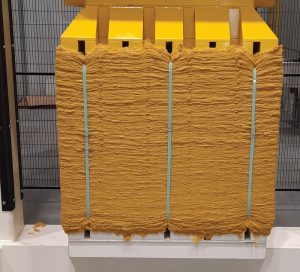
Downstream Processing
General Recycled is just the recycler. So once the fiber bales are ready for spinning, they move downstream in the process to yarn spinners and then fabric manufacturers, followed by dyehouses and garment producers. The company has developed its own value chain of spinners, weavers and knitters across North America, but also sells fiber to existing value chains that an end user of FR garments already has in place. Key to its program is the idea that the recycling program does not upset existing value chains that an end-user has established. “Typically we would sell recycled fiber to an end-users preferred yarn spinner who would sell the yarn to the end-users fabric supplier who would sell the fabric to the garment supplier,” Parker said. “The only difference is that garments made using our fiber now contain some recycled content. And importantly, these very garments can be recycled repeatedly. In fact, the best thing about the process is that recycled garments can be recycled repeatedly in a closed-loop process.”
Industry partners include:
• Yarn spinners — Regitex Inc., Saint-Josephe-de-Beauce, Que-bec; Coats Group in the United States; and Mexico-based Argen-tum Textil;
• Circular knitting, dyeing and fin-ishing — Montreal-based Oratex Inc.; and
• Aramid fiber suppliers — The Netherlands-based Teijin Aramid; France-based Kermel; and Yantai Tayho Advanced Materials Co. Ltd., China.
Performance And Accidental Discovery
Fabric styles most commonly are 4.5-ounce plain weaves, 6- and 7-ounce twills, plaited jersey, athletic fleece, polar fleece and FR cuffs. The fiber also may be used to produce nonwovens.
All fabrics are certified by independent third parties such as Groupe CTT, Saint-Hyacinthe, Quebec, Toronto-based Kinectrics and the Protective Clothing & Equipment Research Facility at the University of Alberta. The third party testing established that the recycled fabrics meet or exceed the necessary flash fire and arc flash protection requirements determined by the following standards: Canadian General Standards Board (CGSB) 155.20; National Fire Protection Association (NFPA) 2112 Flash Fire Standard; Canadian Standards Association CSA Z462, Workplace Electrical Safety Standard; and NFPA 70E, Electrical Safety in the Workplace.
UL certification also can be provided, and additional tests may be performed when requested.
A well-known aramid fiber manufacturer published some 4 second manikin burn test results showing that its fiber, in a 6 ounce fabric, achieved 40 and 45 percent combined second- and third-degree burns. “We suspect aramid producers like to show this result to highlight how well aramids perform in a 4 second burn test compared to a cotton/nylon or 100-percent cotton fabric that has been treated with a fire retardant,” Kasper surmised. “These fabrics, usually heavier than aramids, perform very well at 3 seconds, but fail miserably at 4 seconds where it is not uncommon to see 85 to 90 percent combined second- and third-degree burns. It would be impossible to survive such a scenario.”
A 6 ounce fabric incorporating General Recycled fiber showed excellent results in a 3 second manikin burn test achieving only 7.3 percent second-degree burns, surpassing any results compared to virgin aramid garments of the same or similar fabric weights. To have an idea of where the fabric truly failed, the company decided to experiment and test in a 5 second manikin burn scenario to see what happened. “On a 5 second test, we achieved 21.5 percent second degree burn only!” Kasper reported. “This was excellent and unexpected and 100 percent better than the leading aramid fabric of the same weight. We knew we were onto something.”
It was discovered that the inclusion of recycled fiber in the yarn process builds additional thermal protective characteristics into the final yarn composition. General Recycled’s customers report similar test results in their independent testing.
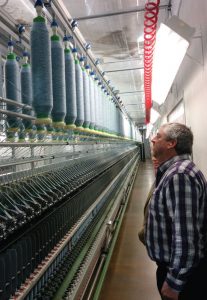
Getting The FR Garment Industry On Board
In order to help the adoption of its recycled fiber, General Recycled focused on education. “We knocked on doors, made presentations and pushed for companies to trial our process,” Kasper noted. “We discovered early on that speaking to procurement was not necessarily the right way to go about things. It was important to also have waste management people in the room. The program starts with collection and we needed to educate the industry about the costs associated with dis-posing of these hazardous garments, which was easily zeroed in on by the waste management folks. Safety techs also helped to tell the story as the recycled fabrics were certified prior to testing in the field.”
Paradigm Shift
According to Parker, aramid recycling is a global issue that has a global impact. Sadly, there has been only a slow movement towards recycling. “Aramids are specified the world over to most personnel working in the oil and gas sectors,” he said. However, he also expressed that there is more interest in the process from jurisdictions outside of North America than in North America.
“Companies need to follow through on their sustainability messaging,” Parker urged. “They tend to spread the message that they are doing all they can in relation to sustainable practices and waste management but continue to allow used garments to go to landfill. Knowing that it’s possible to recycle the garments into a new garment that performs the same or better than a virgin fiber product in a cost-effective manner should make the choice a no brainer. Companies send their garbage to landfills because they can with impunity.”
Parker expressed that a paradigm shift in thinking is needed. “A company has to be open to considering the options for recycling their garment waste properly,” he said. “FR garment recycling doesn’t appear to be high on anyone’s list, and far too often, the ‘out of sight, out of mind’ mentality gets in the way. But that doesn’t mean non-biodegradable FR garments shouldn’t be disposed of properly when there are technologies available to give them a second life. This problem only continues to grow and will continue to be a major problem in the future.”
Parker also emphasized that extended producer responsibility (EPR) — a policy approach that gives the manufacturer a greater level of responsibility to manage the end-of-life for products they make — puts pressure on producers to get involved and make the shift.
The Solution Exists
General Recycled has created a true closed-loop and cost-effective recycling program for the proper disposal and reuse of aramid workwear. The company wants the industry to see that the solution is here because garments made using recycled content are cheaper, provide increased thermal insulation protection, are third-party independently certified and can be recycled repeatedly. The recycling process also solves a tricky environmental issue. “Does the idea require a different way of looking at the disposal issue? Yes!” Kasper said. “But the proof is here for all to see.
“Chasing the technology and developing what we have has been exciting as well as challenging,” Kasper mused. “Every step of the way, people have told us we are nuts and it will never work. And yet, every step of the way we have proved the naysayers wrong. Recycling aramids not only works, but the resulting recycled products are without a doubt just as good, if not better, than the leading virgin products. That is exciting!”
March/April 2024




